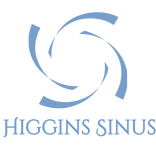What is the most common symptom of odontogenic sinusitis?
Do you suspect that you may be suffering from odontogenic sinusitis? Are you looking for reliable ways to detect the condition? If so, then this blog post is for you! We'll discuss what the most reliable symptom of odontogenic sinusitis is and how to detect it.
Introduction to Odontogenic Sinusitis
Odontogenic sinusitis is an inflammatory condition that affects the paranasal sinuses, and is often caused by underlying dental pathology, trauma, or other possible causes. It is a highly prevalent, underappreciated and underdiagnosed disease that has been known for over 100 years. OS affects a significant proportion of patients with paranasal sinus infections, and its evaluation can be challenging. In this blog post, we will discuss the most reliable symptom for odontogenic sinusitis and the diagnostic criteria, possible causes, treatment options and more.
Clinical Presentation of Odontogenic Sinusitis
Odontogenic sinusitis was first described in the scientific literature back in 1943 and is characterized by malodor as its most common symptom. It is associated with maxillary sinusitis and can present itself with a variety of symptoms. Unilateral purulent rhinorrhea, facial pressure pain, nasal obstruction syndrome, purulent secretions visible on the posterior wall of the pharynx, decreased smell, postnasal drip, cheek pain, and dental pain are all common symptoms of OS. Furthermore, diagnostic criteria for OS includes having two or more of these symptoms for more than twelve weeks. Patients may also experience dental implant-related complications which may be the cause of OS. Transnasal endoscopic sinus surgery is one possible treatment option for those suffering from OS. Endoscopic nasal exam can also help in determining the severity of OS and its association with periodontal/endodontic disease. Thus,
malodor is considered to be the most reliable symptom for odontogenic sinusitis.
Symptoms of Odontogenic Sinusitis
Patients suffering from odontogenic sinusitis typically present with unilateral symptoms, such as purulent nasal discharge, facial pain, and dental pain. Additionally, a foul odor may be present. Endoscopic nasal exams can also be used to diagnose ODS. The most common symptom of odontogenic sinusitis is unilateral purulent nasal discharge, which was found in 66.7% of cases. Other symptoms may include middle facial pain, nasal obstruction, and mucopurulent discharge. It is important to note that these symptoms are usually preceded by a cold or upper respiratory infection. Teeth with close proximity to the maxillary sinus floor also have a higher association with ODS.
Diagnostic Criteria for Odontogenic Sinusitis
So far, we have discussed the common symptoms of odontogenic sinusitis, which include nasal obstruction, purulent nasal discharge, facial pain, and dental pathology. Now, let us take a look at the diagnostic criteria for odontogenic sinusitis. Studies have shown that the most reliable symptom to diagnose odontogenic sinusitis is unilateral sinonasal symptoms lasting for more than 3 months. Nasal endoscopy has also been found to be a useful tool in diagnosing ODS since it can reveal purulent secretions in the middle meatus, which is indicative of an infectious process in the maxillary sinus. Endoscopic nasal exams can also be used to distinguish between non-odontogenic rhinosinusitis and ODS, as sinonasal symptoms are not required to diagnose ODS. Furthermore, studies have established a strong association between ODS and periodontal or endodontic disease. Therefore, it is important to consider all the diagnostic criteria when making a diagnosis of ODS in order to ensure accurate diagnosis and treatment.
Possible Causes of Odontogenic Sinusitis
Odontogenic sinusitis is an infection of the sinuses caused by the spread of bacteria from the mouth. It can be caused by a variety of dental procedures, such as periodontal or endodontic treatments, as well as by untreated periodontal or endodontic disease. Other possible causes include trauma to the teeth or jaw and congenital abnormalities. In some cases, ODS can be difficult to diagnose as the symptoms may be similar to those of other conditions. Therefore, it is important to understand and recognize the potential causes in order to make an accurate diagnosis.
Unilateral Symptoms of Odontogenic Sinusitis
Unilateral symptoms are common in odontogenic sinusitis. The most reliable symptom for ODS is unilateral foul-smelling purulent nasal drainage. Other symptoms may include unilateral nasal congestion, purulent rhinorrhea, cacosmia, postnasal drip, and facial pain or pressure, usually located around the cheek area. It is important to note that ODS can also present with non-specific symptoms such as cough, headache, and hyposmia/anosmia. It is important to consult a doctor if any of the symptoms are present for more than three months. A thorough dental examination and investigations can help to identify the cause of ODS and other associated periodontal or endodontic diseases.
Treatment Options for Odontogenic Sinusitis
The treatment for odontogenic sinusitis is based upon the severity and cause of the infection. Generally, a combination of medical treatment, dental surgery, and/or endoscopic sinus surgery is necessary for successful management. Corticosteroids, additional antibiotics, and saline rinses are often used to reduce inflammation and reduce symptoms. The source of the infection must also be eliminated in order to prevent recurrence. In some cases, this may require the removal of a foreign tooth root from the sinus. A multitude of endoscopic techniques have been used in the treatment of odontogenic disease, including maxillary antrostomy, “mega-antrostomy,” and modified Caldwell-Luc procedures. With appropriate dental treatment and endoscopic sinus surgery, successful management of ODS can be achieved with a success rate ranging from 95-100%.
Role of Endoscopic Nasal Exam in Odontogenic Sinusitis
An endoscopic nasal exam is essential for a definitive diagnosis of odontogenic sinusitis. This procedure involves looking inside the nose and sinuses with a camera. The exam helps to detect the presence of pus, edema, or polyps that may be indicative of odontogenic sinusitis. It can also help to identify any underlying periodontal or endodontic disease that may have caused the infection. Additionally, it is important to note that unilateral symptoms are often seen in ODS, which can be helpful in making a diagnosis. Ultimately, the combination of clinical presentation, endoscopic nasal exam, and imaging studies can help to ensure an accurate diagnosis and proper treatment for odontogenic sinusitis.
Association between Odontogenic Maxillary Sinusitis and Periodontal/Endodontic Disease
The association between odontogenic maxillary sinusitis and periodontal/endodontic disease is very strong. Dental-related sinusitis is usually caused by an infection originating from the teeth, which can spread to the maxillary sinus. In addition, trauma or dental surgery can also lead to OMS. The most common symptoms of OMS include facial pain or pressure, nasal congestion, purulent rhinorrhea, cacosmia, and postnasal drip. It has also been observed that unilateral symptoms are more common in cases of odontogenic maxillary sinusitis. Furthermore, endoscopic nasal exams can help diagnose the condition, which is then followed by proper dental treatment to resolve the symptoms. It is important to note that in order to prevent OMS, it is essential to maintain proper oral hygiene and have regular dental check-ups.
Odontogenic sinusitis is a common cause of maxillary sinusitis, which is often difficult to distinguish from chronic rhinosinusitis. The most reliable symptom for diagnosing odontogenic sinusitis is unilateral odorous purulent rhinorrhea, often accompanied by nasal obstruction, facial pain or pressure, purulent secretions visible in the posterior wall of the pharynx and in the middle meatus, and postnasal drip. Odontogenic sinusitis is highly associated with endodontic and periodontal diseases. A thorough examination, including CT scans and endoscopic nasal exam can help in confirming the diagnosis and provide useful information regarding the best treatment option. The presence of odontogenic sinusitis should be considered in all cases of maxillary sinusitis.
If you're considering these options for treating sinusitis, see a qualified physician who can recommend the right treatment for you. Dr. Thomas Higgins, MD, MSPH, MBA is an experienced rhinologist dedicated to providing sinusitis relief through experience and personalized treatment in Louisville, KY, and Jeffersonville, IN.















